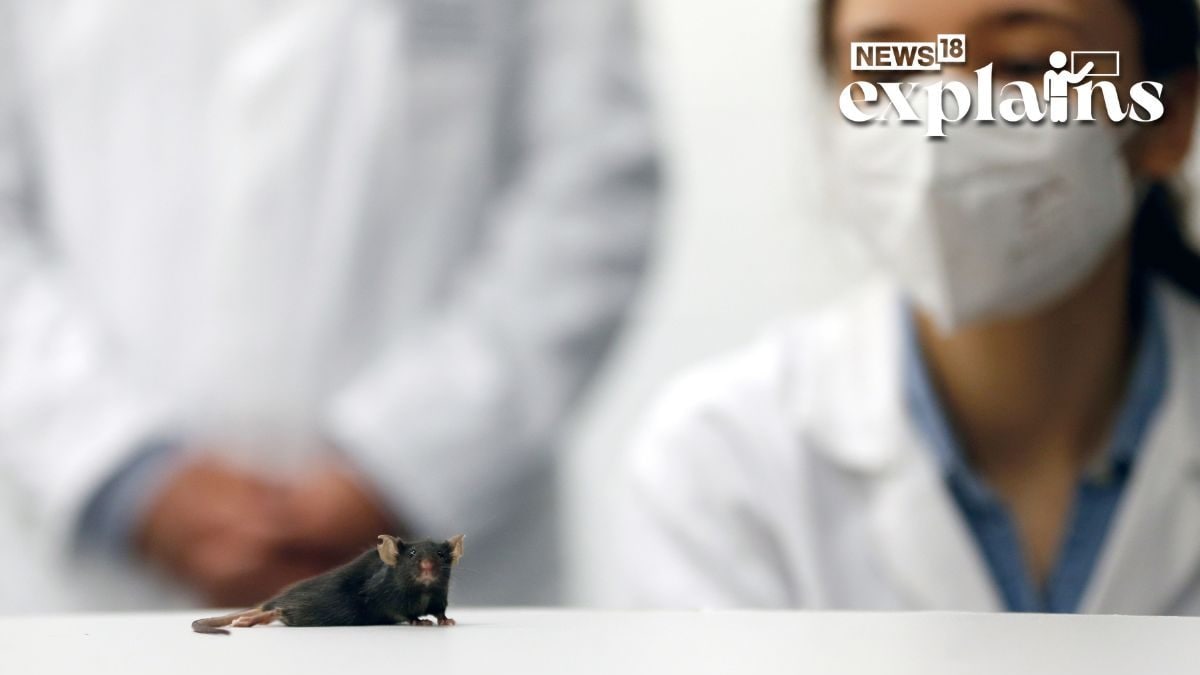Scientists Develop Mice With Two Fathers: Potential for Same-sex Couples to Have Kids? Explained
Published By: Vidushi Sagar
Last Updated: April 02, 2023, 15:32 IST

(Image only for representation: Reuters)
The breakthrough could pave the way for therapies for severe kinds of infertility, as well as the tantalising potential of same-sex couples having a biological child together
Scientists have developed mice with two biological fathers by creating eggs from male cells, a breakthrough that throws up radical new reproductive possibilities. The breakthrough could pave the way for therapies for severe kinds of infertility, as well as the tantalising potential of same-sex couples having a biological child together in the future, said a report by the Guardian.
“This is the first case of making robust mammal oocytes from male cells,” Katsuhiko Hayashi, who led the research at Kyushu University in Japan and is widely regarded as a pioneer in the field of lab-grown eggs and sperm, told the publication.
How Did They Do It?
In 2018, a Chinese study stated that mice with two moms were born, however when they tried it with male mice, the pups barely lived a few days. The Japanese researchers took a different strategy, and the pups in their study appeared to grow normally and to be capable of becoming parents in the conventional way, as per a report by Deutsche Welle.
The procedure begins with extracting a skin cell from the tails of male mice and developing it into a stem cell. They then turned male mouse stem cells into female cells and created functioning egg cells by expanding them and treating them with a medication. Ultimately, the eggs were fertilised and the embryos were put into female mice.
Stem cells are unique human cells that can develop into a variety of cell types, according to the University of Rochester. This can include everything from muscle cells to brain cells. They can also repair damaged tissues in rare circumstances.
To elaborate, the scientists began the experiment by extracting the skin cells from the tail, which, like male humans, had both an X and Y chromosome, and then converting them into induced pluripotent stem cells, or iPSCs – they can be transformed into any type of cell, said a report by Indian Express.
A small percentage of the cells lost their Y chromosome during this process, resulting in “XO” cells. The XO cells were then cultivated in the lab and treated with a chemical called reversine. This enabled them to replicate the existing X chromosome in these cells, resulting in the formation of a XX set, said the report.
Human Possibility?
Hayashi’s team is now seeking to reproduce this feat using human cells, reported the Guardian, albeit the adoption of lab-grown eggs for clinical purposes would face substantial challenges, including ensuring their safety. “Purely in terms of technology, it will be achievable [in humans] even in 10 years,” he said, adding that if the technology was demonstrated to be safe, he would be in favour of it being used therapeutically to allow two men to have a baby.
“I’m not sure if they’ll be available for reproduction,” he admitted. That is a question for [society] as well as the scientific programme.”
Hayashi stated that the approach might also be used to cure severe instances of infertility, such as women with Turner’s syndrome, in which one copy of the X chromosome is absent or partially missing, and that this was the primary objective for the research.
Others suggested that translating the technology to human cells would be difficult. Human cells must be cultured for significantly longer periods of time before they can create a mature egg, which increases the chance of cells accumulating undesirable genetic alterations.
Read all the Latest Explainers here
For all the latest world News Click Here


